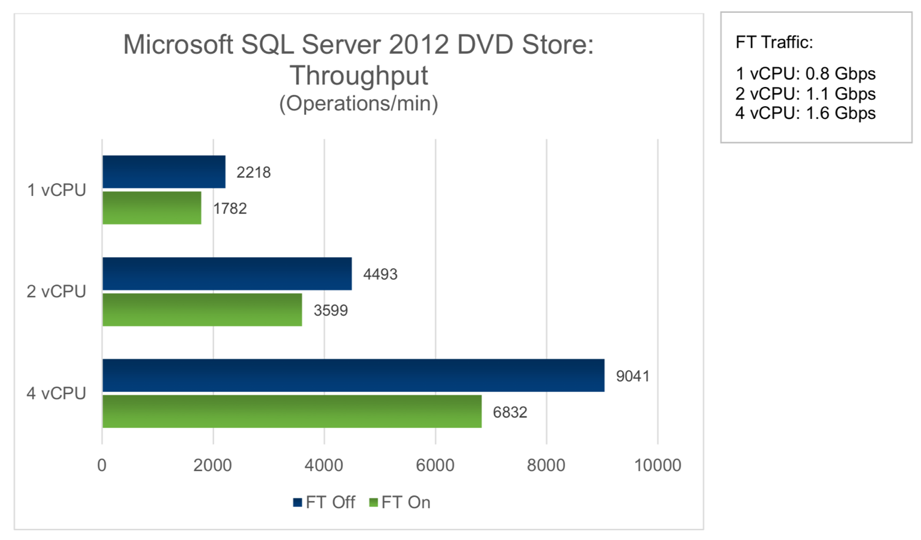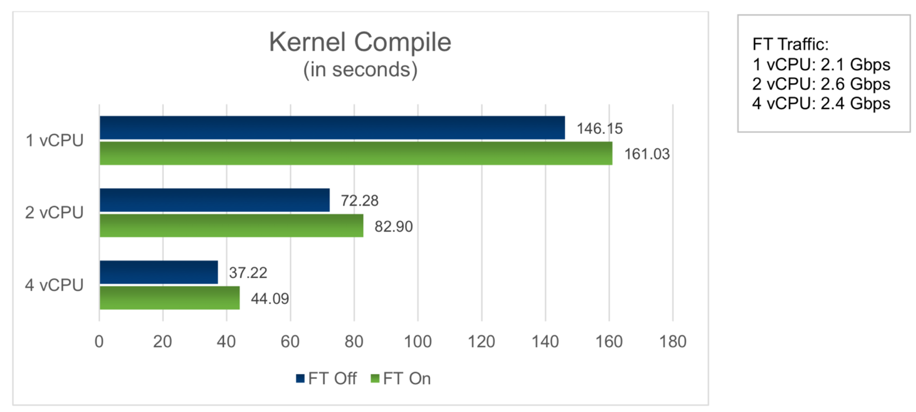VMs protected by FT will have lower performance due to the fact that every single CPU instruction, memory change, or storage I/O needs to be replicated to the secondary VM. Depending on the workload, FT might also generate extensive network traffic.
As with almost any technology, there is always some trade-off. In case of FTs, you get zero-downtime for your VMs and applications, but with a performance hit on the VM.
DVD Store is a benchmarking utility that can measure the maximum throughput of the SQL server:

As you can see, in the case of the DVD Store, the difference between FT-protected and unprotected VMs is between 20-30%, depending on the number of vCPUs.
Another benchmark you can use to measure your CPU performance is to compile a Linux kernel. This is a CPU-intensive operation, and as you can see, the difference between FT-protected and unprotected VMs is 10-20%:

Also keep in mind that your physical network carried out the synchronization between VMs, and depending on the application you run inside the VM, it can generate a significant amount of data.
